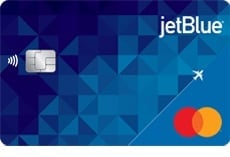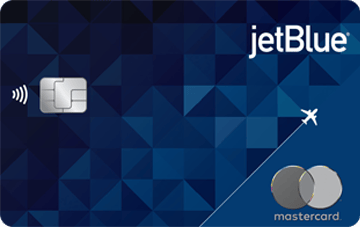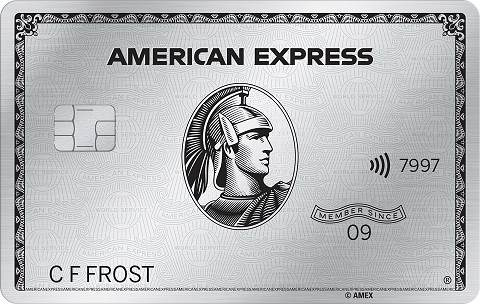The Guide to JetBlue TrueBlue
While JetBlue's program doesn't rank particularly high among other domestic carriers, it still has much to offer.
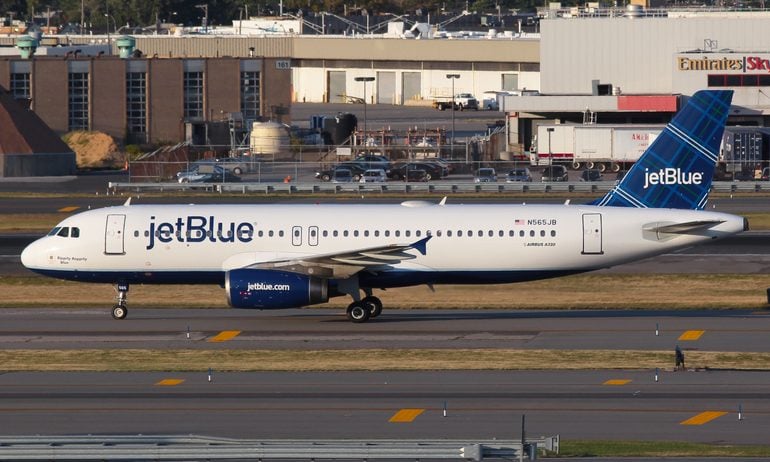
Many or all of the products on this page are from partners who compensate us when you click to or take an action on their website, but this does not influence our evaluations or ratings. Our opinions are our own.
There are a lot of reasons why JetBlue Airways is a pretty great airline. It's long been known for its affordable fares. Its points have no blackout dates and a straightforward value with no award charts to worry about. It also has among the best in-flight entertainment out there.
And of course, there's the JetBlue TrueBlue rewards program, which allows you to earn points for your flight — which you can in turn apply toward a future free flight.
How much JetBlue TrueBlue points are worth
Based on our most recent analysis, NerdWallet values JetBlue TrueBlue points at 1.5 cents apiece. To determine the value of reward miles, we compared cash prices and reward redemptions for economy round-trip routes across several destinations and dates. We divided the cost of the cash ticket by the cost of the reward ticket to determine a “cent per mile” value for each flight, then averaged this value across several flights and dates.
This is therefore a baseline value for JetBlue points, based on real-world data collected from hundreds of economy routes — not a maximized value. In other words, aim for award redemptions that offer 1.5 cents or more in value from your JetBlue points.
To determine the value of your points for specific flights, divide the cash value of the ticket (less any applicable taxes/fees if you redeem miles) by the number of miles required for the flight. So if the ticket would cost either $100, or 15,000 miles + $10 in taxes/fees, the math would be as follows:
($100 – $10) / 15,000 = 0.006, or 0.6 cent per mile.
JetBlue does not have a published award chart. Instead, the points price usually correlates to the ticket’s cash price.
Because JetBlue points are typically “fixed” to the value of cash prices, it’s harder to find sweet spots. You won’t usually get outsized value for your TrueBlue points, but rest assured that you’ll generally get at least 1 cent per point value at minimum.
JetBlue TrueBlue miles value over time
JetBlue TrueBlue miles have increased in value since 2019, even after a slight decrease in 2020.
JetBlue vs. competitors
JetBlue came in fourth out of eight airlines in NerdWallet’s most recent analysis of the best airlines.
It did slightly better in a separate analysis that looked at which airline offered the best loyalty program to its customers, with True Blue coming in at third place.
Here's a closer look at how JetBlue competed across subcategories:
Second in rewards rate.
Second-to-last in operations.
Fourth in elite status benefits.
Fifth in terms of total fees.
How to earn JetBlue TrueBlue points
JetBlue’s program gives rewards called TrueBlue points. Joining the TrueBlue program is free and you can start earning points by booking flights online. Points do not expire.
Earning TrueBlue points when you fly
Earning on JetBlue: The number of points you earn depends on three factors.
The cost of the ticket. You earn JetBlue points based on the ticket cost, not the distance flown.
The fare class of the ticket. Each fare type has a different multiplier, from 1 to 3. So a $100 ticket would earn 100 to 300 points, depending on the fare class. See the chart below for full details.
Where you book your ticket. Booking through JetBlue.com or the JetBlue app earns 1 to 3 bonus points per dollar spent depending on the fare class. See the chart below.
Fare class | Points earned | Free checked bags | Fare features |
|---|---|---|---|
Blue Basic | 1 base point plus 1 bonus point per dollar spent. | 0. |
|
Blue | 3 base points plus 3 bonus points per dollar spent. | 0. |
|
Blue Plus | 3 base points plus 3 bonus points per dollar spent. | 1. |
|
Blue Extra | 3 base points plus 3 bonus points per dollar spent. | 0. |
|
Mint | 3 base points plus 3 bonus points per dollar spent. | 2. |
|
Other flight programs offer additional points: Purchasing an “Even More Space” seat earns you an additional 200 TrueBlue points. Flying with your pet gets you 300 extra points, and booking a JetBlue vacation package (airfare plus hotel) earns bonus points as well.
There are no blackout dates on flights operated by JetBlue, so you can use points for any seat at any time, and points don’t expire. In addition, JetBlue offers the option of pooling points with family and friends.
Earning on other airlines: JetBlue has partnerships with other airlines, such as Icelandair, Hawaiian Airlines and Etihad. In general, the number of points you earn with partners is based on distance flown, but with American it's based on the fare that you paid.
Earning TrueBlue points with a credit card
Co-branded JetBlue credit cards are great, but they aren't the only option for earning JetBlue points through credit card spending.
• 3 points per $1 with JetBlue.
• 2 points per $1 at restaurants and grocery stores.
• 1 point per $1 on other purchases.
• 1 Mosaic tile per $1,000 spent.
• 6 points per $1 with JetBlue.
• 2 points per $1 at restaurants and grocery stores.
• 1 point per $1 on other purchases.
• 1 Mosaic tile per $1,000 spent.
This card earns Chase Ultimate Rewards® points, which can be transferred to JetBlue on a 1:1 basis.
• 5 points per $1 on travel booked through Chase.
• 3 points per $1 on dining (including eligible delivery services and takeout), select streaming services and online grocery purchases (not including Target, Walmart and wholesale clubs).
• 2 points per $1 on other travel.
• 1 point per $1 on other purchases.
This card earns ThankYou points, which can be transferred to JetBlue on a 1:1 basis.
• 10 ThankYou® points per $1 spent on hotels, car rentals and attractions booked through Citi's travel portal.
• 3 points per $1 on air travel and other hotel purchases.
• 3 points per $1 on supermarkets.
• 3 points per $1 on gas stations and EV charging stations.
• 3 points per $1 on restaurants.
• 1 point per $1 on all other purchases.
Earning TrueBlue points through partners
JetBlue partners with dozens of retailers, hotels and other merchants, allowing you to earn additional TrueBlue points. A sampling of offers available as of January 2023:
Hotels: Earn up to 2 TrueBlue points per $1 spent on qualifying stays at most IHG properties. Earn 1 TrueBlue point per $1 spent on qualifying stays at YOTEL properties when booked through YOTEL's JetBlue booking page, JetBlue Vacations or Paisly.
TrueBlue Dining: Register a credit card with the airline's dining program and earn 3 points per dollar spent when you use that card at 11,000 participating restaurants, bars and clubs
Amazon: Earn 3 points for every dollar spent if you access Amazon through the JetBlue website during a flight.
Car rentals: Earn at least 100 points per day (or 200 if you're a Mosaic member) and access special rates at Budget and Avis.
Search for partners and get details about earning at the TrueBlue partnerships page.
Purchasing additional TrueBlue points
You can buy additional TrueBlue points through the website, but they are expensive. If you buy 1,000 points, which NerdWallet values at $13, you will pay $37.63 — so you are paying nearly triple what they are worth.
Buying points can be good in a pinch if you’re just shy of the amount needed for an award and need to top off your TrueBlue account. But in general, it’s not a good idea to purchase points.
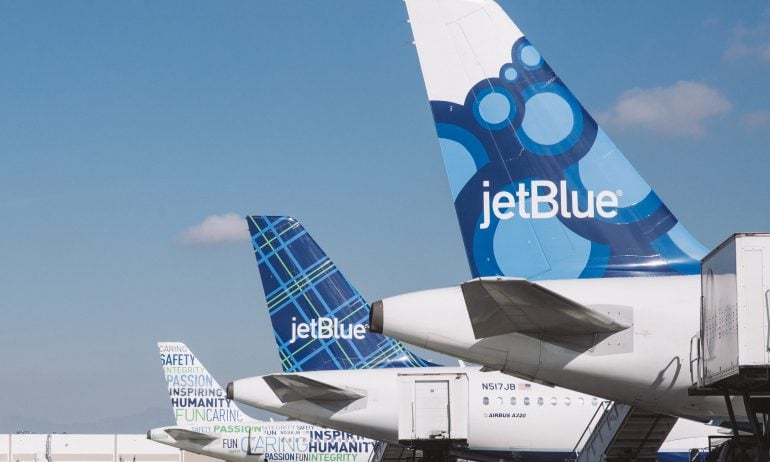
(Photo courtesy of JetBlue)
How to redeem JetBlue TrueBlue points
One of the best ways to redeem JetBlue TrueBlue points is through JetBlue flights themselves. While JetBlue launched with a focus on the eastern U.S., JetBlue has gradually expanded operations to more areas of the country. Hub cities include Boston; New York-John F. Kennedy; Orlando; Fort Lauderdale, Florida; and Long Beach, California. It also flies to dozens of locations in the Caribbean, Mexico and South America, including Turks and Caicos and St. Thomas.
» Learn more: Plan your next redemption with our airline points tool
When searching for flights at JetBlue.com, toggle to see the fare displayed in either dollars or points.
JetBlue also has a “Best Fare Finder” tool, which helps you compare prices for different days in an easy-to-see calendar view. The calendar shows the lowest fares for an entire month, and you can view multiple months at once.
Good redemption options
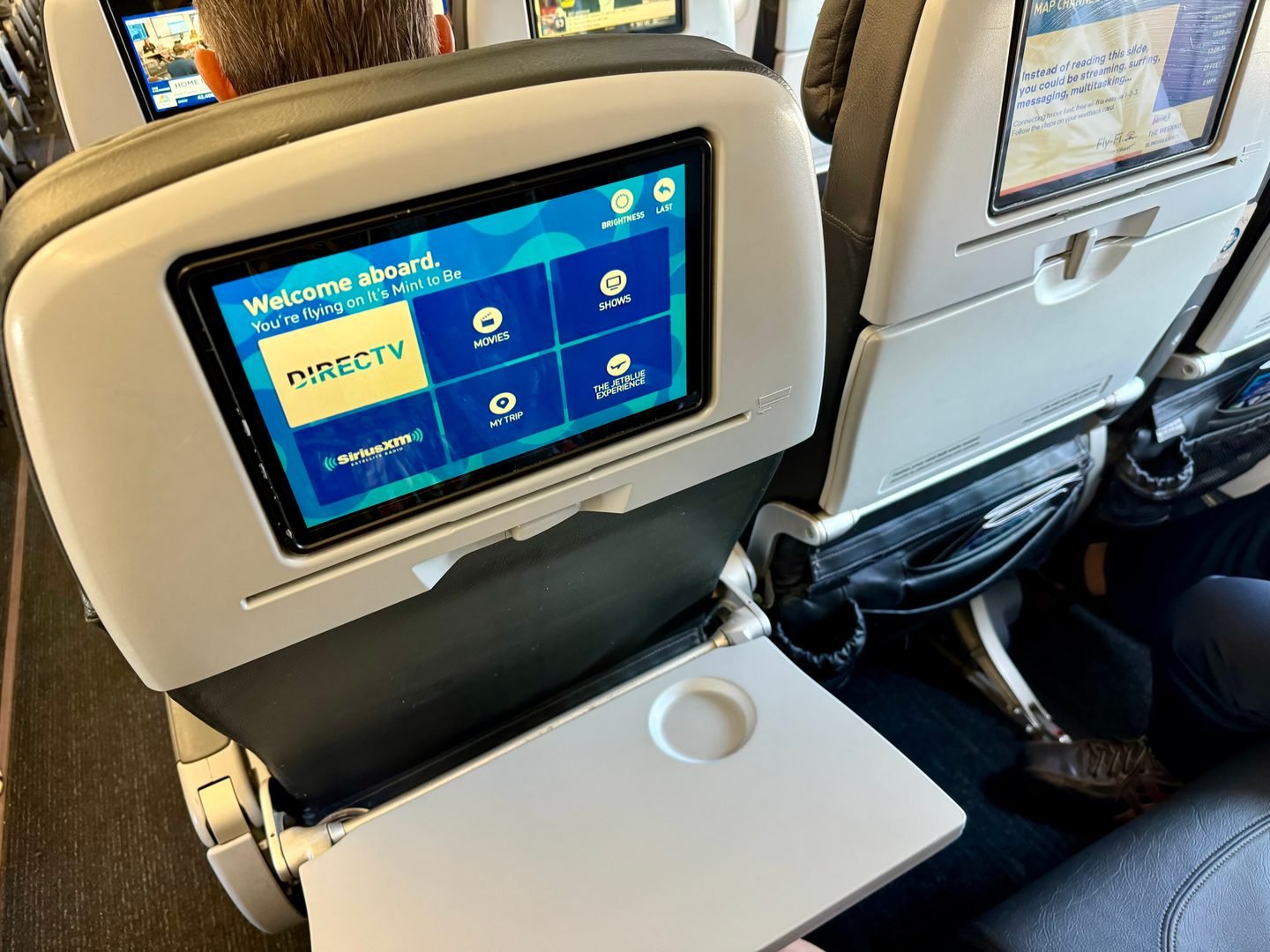
The best way to redeem TrueBlue points? A seat on JetBlue. (Photo by Sally French)
Unlike other airline loyalty programs, TrueBlue doesn’t offer any redemption options that give you less than 1 cent of value per point, so you’ll likely get a decent return on your rewards no matter how they’re spent. Purchasing vacation packages, which include flights bundled with hotel accommodations, can be a more valuable redemption option than booking flights alone. An even more valuable option is redeeming points for magazine and newspaper subscriptions, which comes out to around 4 cents per point.
Even though JetBlue has several partner airlines as far as earning miles goes — including Emirates, Icelandair and Singapore Airlines — there’s only one partner that you can currently redeem your TrueBlue points with: Hawaiian Airlines.
Redeeming JetBlue points for flights within Hawaii is an especially good deal. That's because it costs just 6,000 points each way to fly within Hawaii if you use your TrueBlue points, compared to 7,500 each way if you use Hawaiian Airlines miles on those same flights. Do the math, but — especially if cash prices are high — this could be a good redemption for your JetBlue points. However, the deal is not as good for flights to Hawaii from elsewhere. Hawaiian Airlines flights start at 22,000 TrueBlue points from the mainland U.S., versus just 20,000 using actual Hawaiian Airlines miles.
Bad redemption options
You can donate points to charities, buy magazine subscriptions with them or use them to book JetBlue vacation packages or flights on Hawaiian Airlines.
Typically the value of these redemptions are low; it’d be more economical to buy magazines in cash and save your points for flights.
But if you don’t intend to fly on JetBlue again, then that redemption might make sense for you. Or, if you’re simply feeling altruistic, then consider donating your points to charity instead.
What if you don't have enough JetBlue TrueBlue points to book a flight?
Another reason to love JetBlue: It is one of the few airlines that allows you to book with a combination of cash and points. To book with JetBlue’s Cash + Points option, search for a flight as usual and select “TrueBlue points” as your payment option. Upon selecting your flight, a scale will appear with a slider that you can drag to select how many points versus how much cash you want to spend.
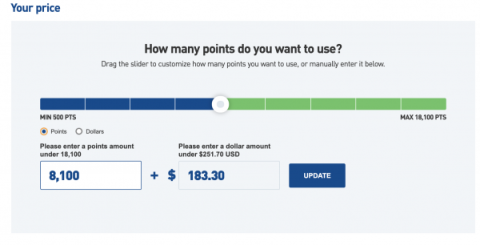
More often than not, booking with Cash + Points ends up costing slightly more in overall value than it would had you purchased entirely in points or entirely in cash, but the difference is usually minor. If you don’t have enough TrueBlue points to cover the cost of your full itinerary — but you also don't like sitting on a small pile of points — then paying with the combo of points and miles is generally a smart idea.
JetBlue elite status
As of spring 2023, JetBlue’s formerly two-tiered elite status program has expanded to four, appropriately titled Mosaic 1, Mosaic 2 and so on. (You can no longer earn Mosaic+ as of Jan. 1, 2023, but if you earned it in 2022, your benefits last through the end of this year.)
Anyone can sign up for TrueBlue for free; once enrolled, you're a basic member. From there, you begin earning what are called “tiles,” which are used to track and measure progress toward JetBlue Mosaic elite status. Tiles are earned through spending on JetBlue travel or with JetBlue credit cards.
Here’s how the earning rates break down:
Earn one tile for every $100 spent on travel booked through JetBlue (that includes JetBlue Vacations, Paisly by JetBlue, JetBlue fees and JetBlue add-ons).
Earn one tile for every $1,000 spent on JetBlue credit cards.
Here’s a breakdown of the four tiers of elite status, how many tiles you need to reach each level, and some of the best perks of each level.
Tiles needed to earn | Spending needed to earn that many tiles | Top benefits (higher Mosaic tiers include all of the benefits of lower tiers) | |
|---|---|---|---|
Mosaic 1 | 50. | $5,000 on JetBlue travel. |
|
Mosaic 2 | 100. | $10,000 on JetBlue travel. |
|
Mosaic 3 | 150. | $15,000 on JetBlue travel. |
|
Mosaic 4 | 250. | $25,000 on JetBlue travel. |
|
JetBlue partner airlines
The list of JetBlue partner airlines is ever-growing. JetBlue lists the following airlines as partners that allow you to earn TrueBlue points on their flights:
Credit cards that earn TrueBlue points
The following credit cards allow you to earn TrueBlue points:
3 points per dollar spent on JetBlue purchases.
2 points per dollar spent at restaurants and grocery stores.
1 point per dollar spent on other purchases.
$0 annual fee.
JetBlue Plus Card
6 points per dollar spent on JetBlue purchases.
2 points per dollar spent at restaurants and grocery stores.
1 point per dollar on all other purchases.
5,000 bonus points on account anniversary every year.
$99 annual fee.
6 points per dollar spent on JetBlue purchases.
2 points per dollar spent at restaurants and office supply stores.
1 point per dollar on all other purchases.
First checked bag free.
$99 annual fee.
JetBlue Mastercard Eleva (available only to Puerto Rican residents)
3 points per dollar spent on JetBlue purchases.
1 point per dollar on all other purchases.
First checked bag free for cardholder and up to three companions.
$99 annual fee.
JetBlue Mastercard (available only to Puerto Rican residents)
2 points per dollar spent on JetBlue purchases.
1 point per dollar on all other purchases.
$0 annual fee.
What it’s like flying on JetBlue
The JetBlue fare classes are (in order from finest to most basic) are:
All fares — whether basic economy (Blue Basic) or first class (Mint) entail an in-flight experience that scored JetBlue the gold medal spot in NerdWallet’s annual rankings of airlines by best in-flight experience, as part of the 2023 Best Of Awards.
All seats include free live TV and free movies, which are displayed on seatback screens at every seat (so you don’t need to worry about bringing a charged up iPhone to watch those free movies — as is the case on other airlines). Speaking of iPhones, JetBlue offers free Wi-Fi and free in-flight messaging across all devices.
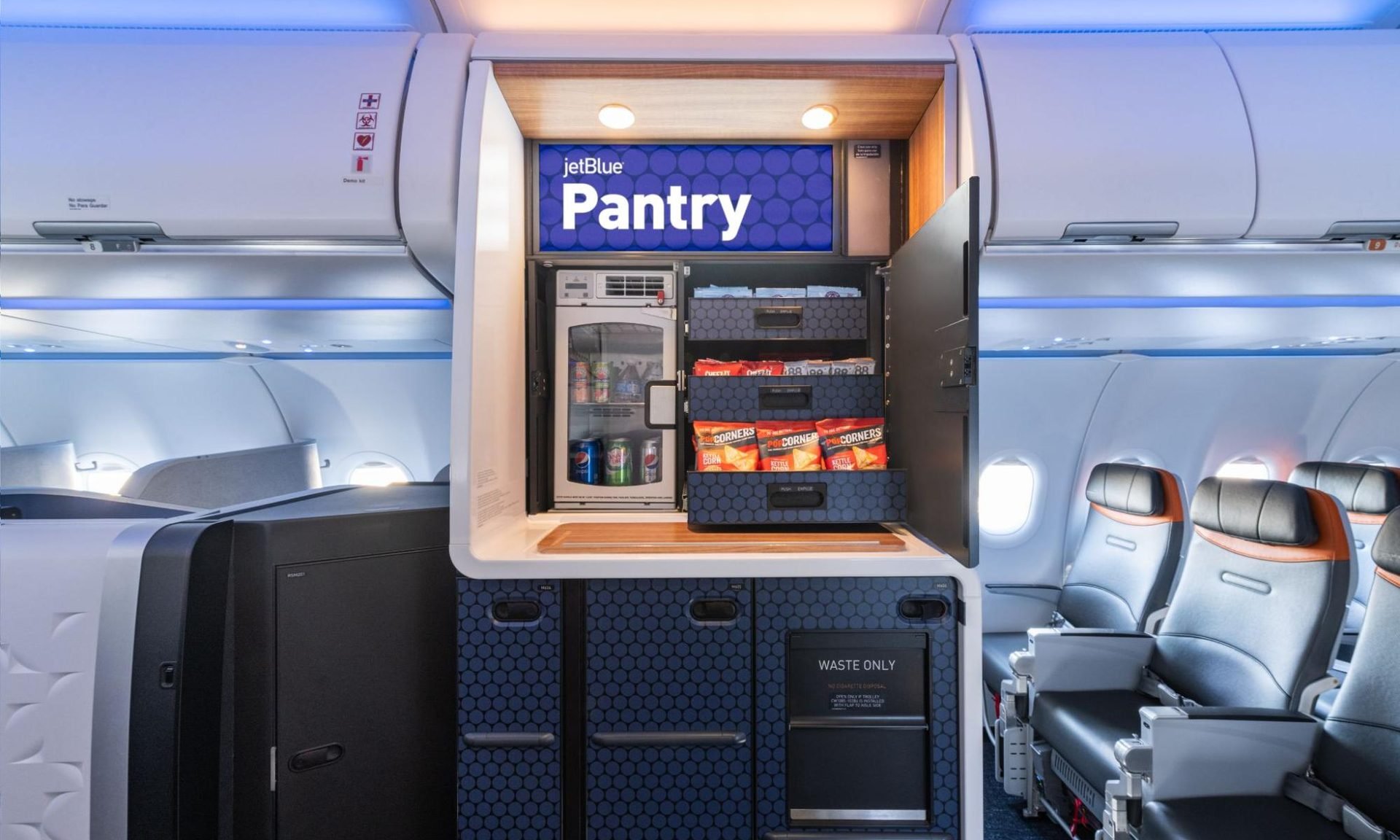
(Photo courtesy of JetBlue)
If you’re hungry, you’re welcome to enjoy free brand-name snacks and drinks. Complimentary drinks include Pepsi products and Dunkin' coffee, and snacks come from name brands that can vary, but have included Cheez-Its and PopCorners. Snacks also mesh well with vegan, gluten-free and nut-free diets with offerings like plantain chips, vegan butter pretzels and oat flour cookies.
On select flights, the snacks are offered "serve yourself" style through a compartment on the aircraft called the “Pantry.”
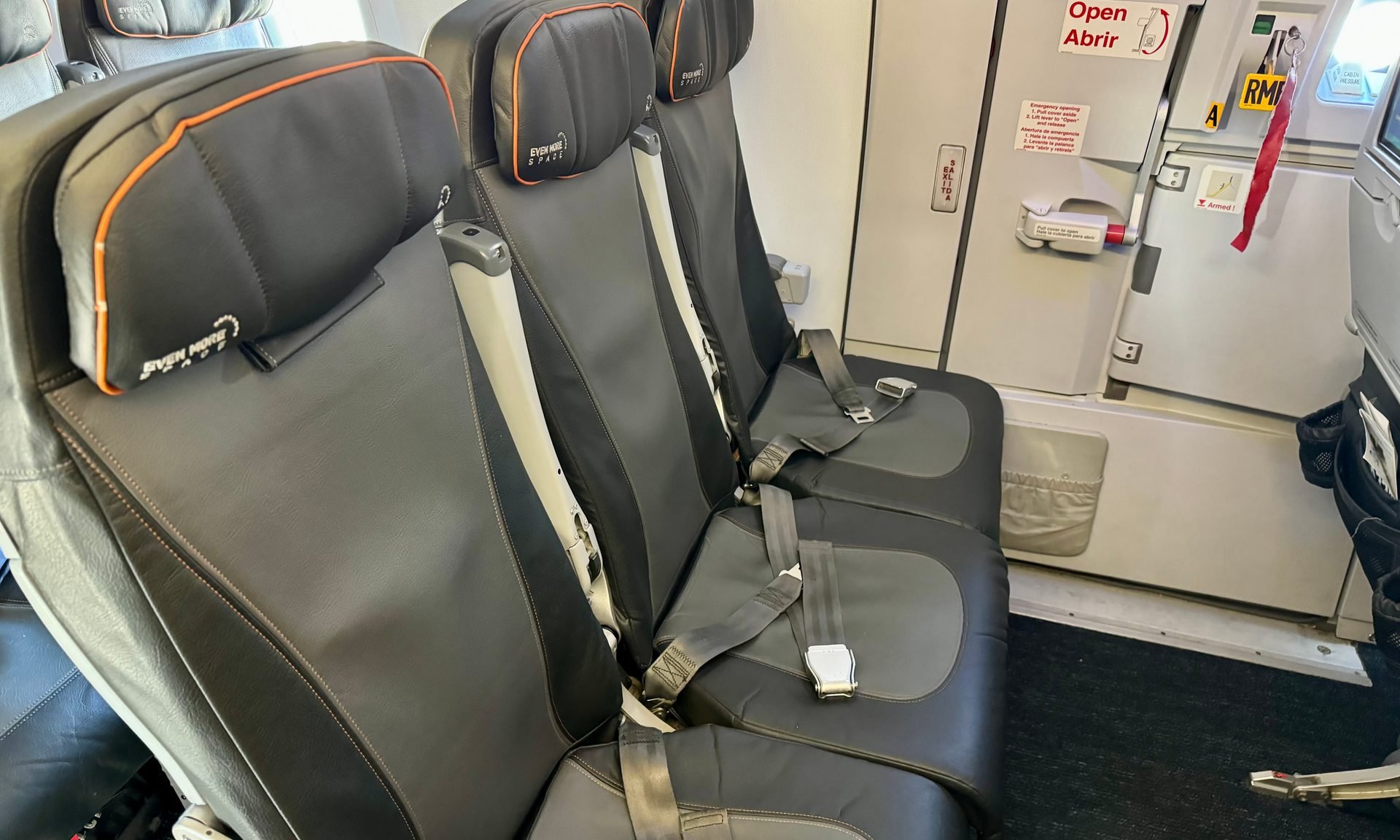
JetBlue includes the emergency exit row seating in its Even More Space seating, which incurs an extra charge. (Photo by Sally French)
Even if you book a basic economy fare, you can still upgrade a la carte to get a bit more legroom by purchasing an Even More Space seat. If you have Mosaic status, you might not even have to pay for it. No matter your fare class, Mosaic members may request same-day Even More Space seats at the airport at no extra charge — which are doled out to elites when available.
As you splurge on the better seats, the benefits get sweeter.
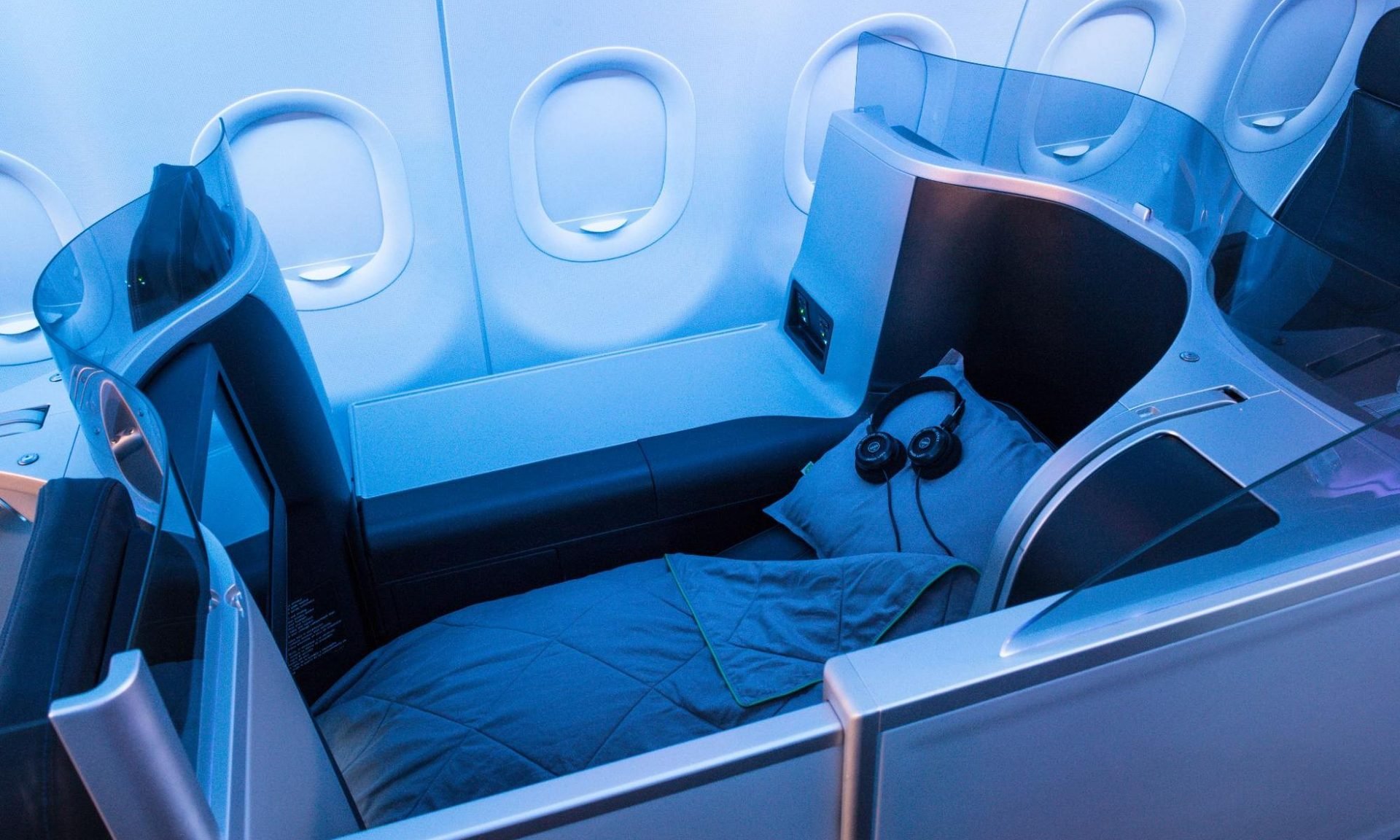
A lie-flat Mint seat. (Photo courtesy of JetBlue)
Mint, which is JetBlue’s first class, offers the longest fully lie-flat seat (6'8") on a domestic premium flight. Other benefits of Mint include a dedicated Mint check-in queue and priority boarding.
Some aircraft offer the new front-row Mint Studio, which boasts the largest TV on a U.S. airline. JetBlue dubs this your own “apart-mint.”
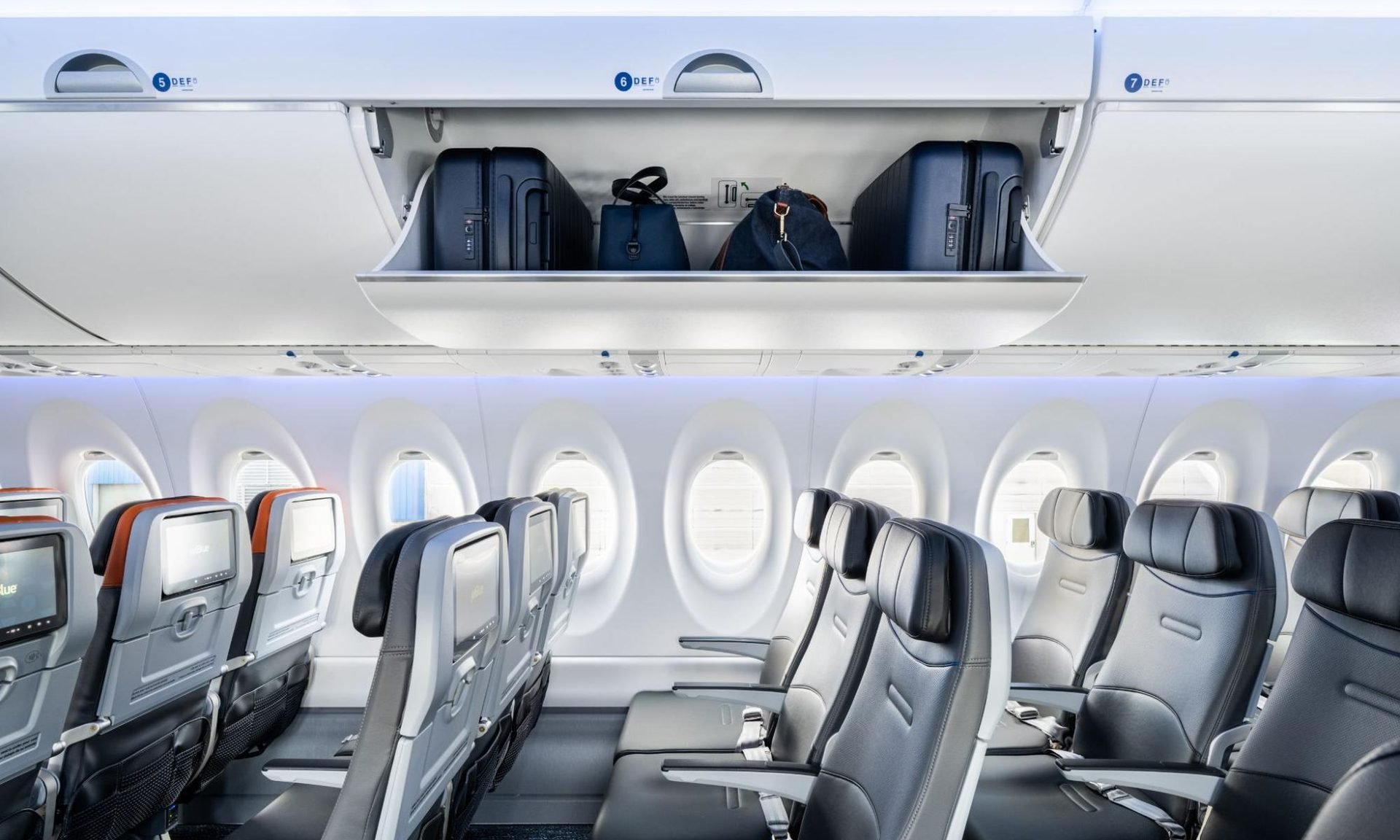
(Photo courtesy of JetBlue)
JetBlue bag fees
JetBlue allows most passengers to bring a personal item and a carry-on at no cost. However, Blue Basic fares are only allowed to bring one personal item that fits underneath the seat (a carry-on bag will be allowed for this fare class beginning Sept. 6, 2024).
Fees for checked luggage on JetBlue vary depending on the fare you select, but they typically start at $35 for the first bag.
If you need to change or cancel a JetBlue flight
Refundable JetBlue tickets are always fully refundable.
For nonrefundable tickets, there’s still good news: JetBlue does not charge change and cancellation fees on Blue, Blue Extra, Blue Plus and Mint fares. Blue Basic fares incur a fee for changes or cancellations ($100 for U.S., Caribbean, Mexico and Central America routes and $200 for all other routes). Full details about what you get (or don't get) with JetBlue's fare classes are available on JetBlue's "Our Fares" page.
(Top photo courtesy of JetBlue)
How to maximize your rewards
You want a travel credit card that prioritizes what’s important to you. Here are some of the best travel credit cards of 2025:
Flexibility, point transfers and a large bonus: Chase Sapphire Preferred® Card
No annual fee: Wells Fargo Autograph® Card
Flat-rate travel rewards: Capital One Venture Rewards Credit Card
Bonus travel rewards and high-end perks: Chase Sapphire Reserve®
Luxury perks: The Platinum Card® from American Express
Business travelers: Ink Business Preferred® Credit Card
The Platinum Card® from American Express
Travel
Earn 5X points on certain flights (up to $500,000 per calendar year) and hotel stays, hundreds of dollars a year in credit for travel and shopping, and a suite of perks for high-end lifestyles.




